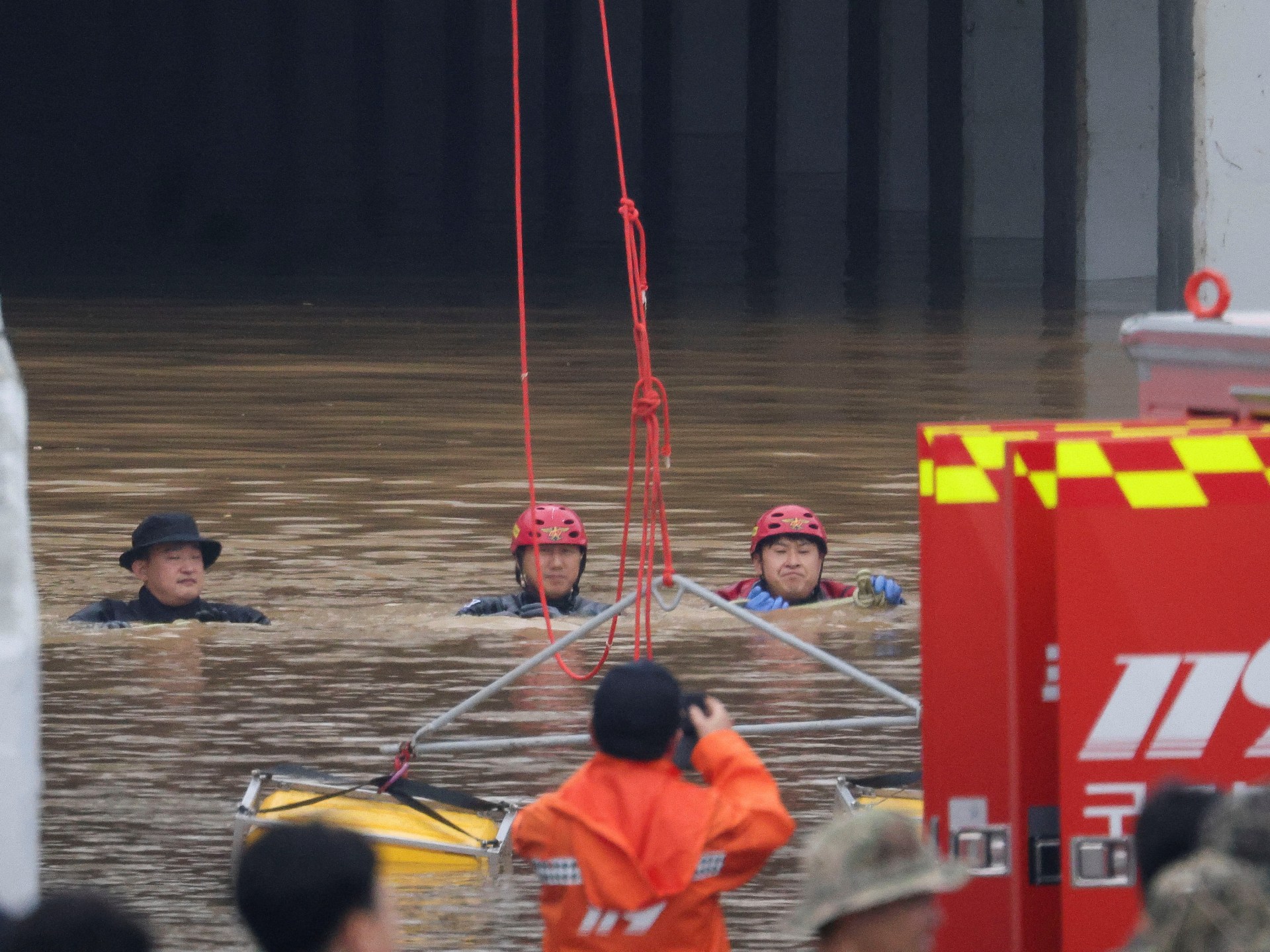Rescue workers found 7 bodies in Osong tunnel to reach people trapped in flash floods caused by days of heavy rains.
Rescue workers have recovered seven bodies from a bus stuck in a flooded underground tunnel in South Korea, after days of rain caused widespread flooding, landslides and a large dam to overflow, according to media reports.
Officials in the central city of Osong told Yonhap news agency on Sunday that rescue workers had recovered six more bodies as they scrambled to reach dozens of people trapped in the 685-meter (2,247-foot) long tunnel.
Nearly 400 rescue workers, including drowned people, were searching a tunnel in the central city of Cheongju, where vehicles, including a bus, were submerged in flash floods on Saturday evening, said Seo Jeong-il, chief of the city’s fire department. A presentation.
Photos and video from the scene showed rescue workers pumping brown water out of the tunnel.
The four-lane tunnel was submerged after the banks of the nearby Miho River collapsed following three days of heavy rain.
According to media reports, the flood rushed through the tunnel too quickly for people to escape. Fire officials estimated the tunnel was filled with water within two to three minutes.
According to the Korea Herald newspaper, rescuers recovered a body from the tunnel on Saturday and rescued nine people who survived by clinging to the sides of guardrails around the tunnel, officials said.
On Saturday, 15 vehicles, including a bus and 12 cars, were trapped in the tunnel and a total of 11 people were reported missing.
“There were several cars inside the tunnel when the water started coming in and it rose very fast,” one of the nine survivors told Yonhap on Saturday.
“I don’t understand why the tunnel wasn’t closed earlier.”
It has been raining heavily since July 9 in South Korea, which is at the peak of the summer monsoon season.
At least 26 people were killed in landslides and floods triggered by rains on Saturday and Friday, the interior and defense ministries said late on Saturday. All the deaths were reported in the central and southeastern regions of the country.
Most of the casualties — including 17 dead and nine missing — were in northern Gyeongsang province, where large landslides mostly engulfed homes in the mountainous region.
In the hardest-hit areas, “entire houses were swept away,” an emergency responder told Yonhap.
About 5,570 people have been forced to evacuate due to the rains, the ministry said. Thousands of people were ordered to leave their homes after the Gosan Dam in North Chungcheong Province began overflowing Saturday morning, submerging nearby low-lying villages.
As of Saturday night, more than 4,200 people were staying in makeshift camps.
The rains have disrupted travel across the country, canceling about 20 flights and suspending its regular train services and some bullet trains, the ministry said.
Around 200 roads are closed.
President Yoon Suk-yeol, who visited Ukraine on Saturday, asked Prime Minister Han Tak-soo to mobilize all resources to respond to the disaster, his office said.
Urging authorities to prevent flooding and landslides, the Prime Minister sought support from the Defense Ministry for rescue operations.
The Korea Meteorological Administration, meanwhile, issued heavy rain warnings, saying heavy rain is expected until Wednesday next week and weather conditions pose a “severe” danger.
South Korea is often hit by floods during the summer rainy season, but the country is generally well prepared and the death toll is usually relatively low.
It withstood record rainfall and floods last year, which killed more than 11 people. Among them were three people who died after being trapped in a Seoul semi-basement apartment made famous internationally by the Oscar-winning Korean film Parasite.
The South Korean government said the 2022 floods were the heaviest since weather records began in Seoul 115 years ago and blamed climate change for the extreme weather.

